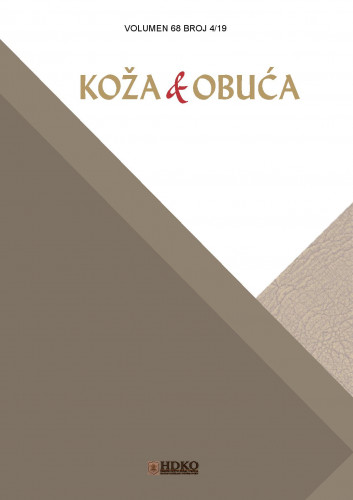Men’s socks were designed and manufactured in multiple plated single jersey structure using 20 tex viscose and Tencel yarn, 156 and 220 dtex multifilament PA 6.6 yarn and 25 tex cotton yarn. Sock mass and sock thickness were determined, the height of the sock leg, the length of the sock foot and half of the leg circumference and half of the foot circumference were measured. Thermophysiological sock wear comfort was determined by measuring thermal resistance on the thermal foot manikin. The results revealed that the sock samples containing the ring spun yarn in the structure had higher thermal resistance than the socks containing rotor and air-jet spun yarns. The obtained difference of thermal resistance of the sock samples per type of the basic yarn was significant. The viscose socks made of ring spun yarns with an added coarser cotton yarn and PA 6.6 yarn had the highest thermal resistance, while the lowest thermal resistance was recorded for the Tencel rotor spun yarns.
Sažetak

 Koža i obuća : časopis za kožu, obuću, dizajn te srodna područja u interdisciplinarnom pristupu = the journal for leather, footwear, design, as well as other similar areas in an interdisciplinary approach : 68,4(2019) / glavni i odgovorni urednik, editor-in-chief Budimir Mijović.
Koža i obuća : časopis za kožu, obuću, dizajn te srodna područja u interdisciplinarnom pristupu = the journal for leather, footwear, design, as well as other similar areas in an interdisciplinary approach : 68,4(2019) / glavni i odgovorni urednik, editor-in-chief Budimir Mijović.